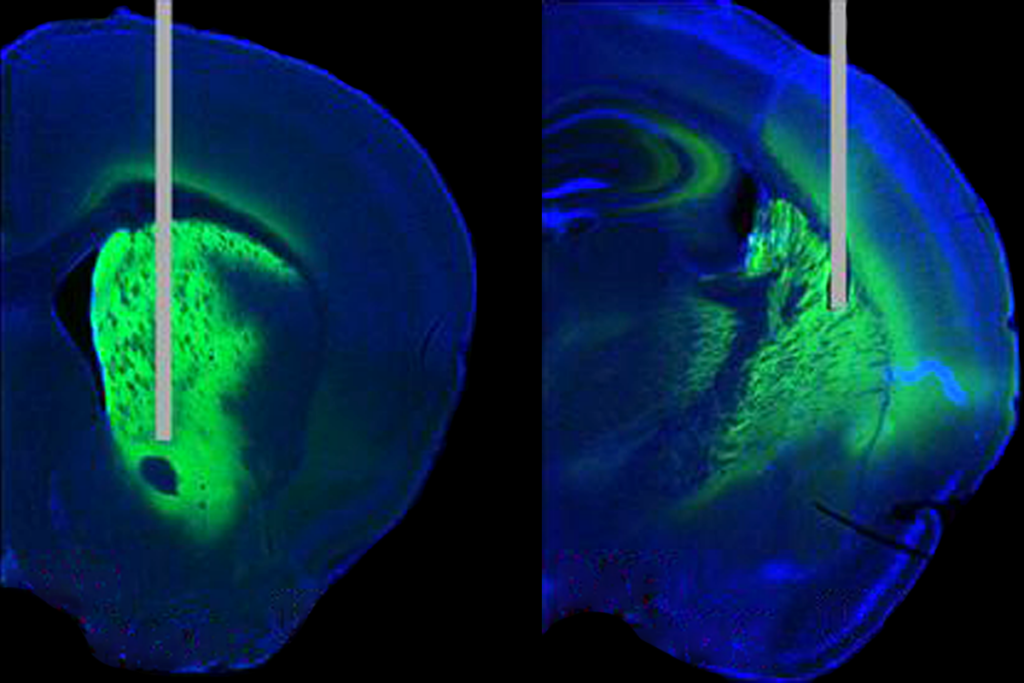A new head-mounted robot enables mice to move freely, despite being attached to heavy brain-recording machinery, according to a new preprint. The tool could help scientists dissect the neural circuits that control natural behaviors.
To measure brain activity in an awake mouse, scientists typically must fix the animal’s head in position beneath a microscope, limiting the types of behavior they can investigate. Adding a virtual environment and a treadmill can expand the behavioral possibilities by creating the illusion of movement through space but cannot fully replicate reality, says Ted Abel, chair of neuroscience and pharmacology at the University of Iowa in Iowa City, who was not involved in the study. “The vestibular system and interoception are important for navigation, and these sensations don’t show up if the head is fixed.”
Miniaturized microscopes fitted to a mouse’s head can minimize disruptions to the animal’s natural movement, but these devices have limited functionality and can only measure small brain regions at a time.
The new tool — a “cranial exoskeleton” — comprises a three-armed robot that senses the animal’s movement and moves with it. By connecting the robot to recording devices, researchers can investigate brain activity in detail as a mouse nimbly navigates its surroundings.
“This strikes me as a real advance,” Abel says. It’s “getting closer to naturalistic behaviors, enabling us to understand how the brain responds to the environment and how animals learn to navigate the environment.”
I




